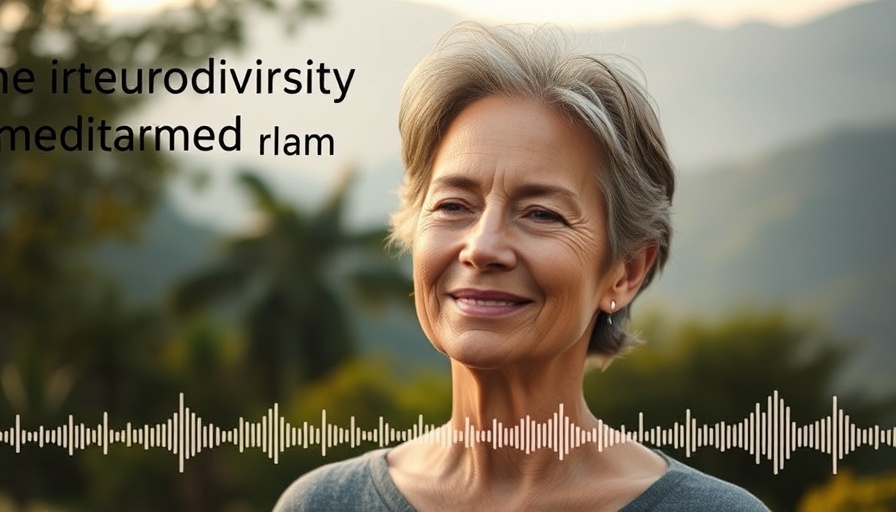
Harnessing Mindfulness: The Dual Anchor Technique for Busy Parents
In today's fast-paced world, it’s common for parents to feel overwhelmed and distracted. Between parenting responsibilities and work, mental restlessness can challenge even the most dedicated individuals. That’s why exploring meditation practices like the Dual Anchor technique developed by Sue Hutton, can be a game-changer for families.
A Tool for Mindfulness Accessible to Everyone
The Dual Anchor technique is designed especially to cater to the needs of neurodivergent individuals. Traditional meditation practices may leave some feeling alienated, especially when focusing on stillness seems an impossible feat. The beauty of the Dual Anchor approach is that it firmly roots itself in sensory engagement, utilizing both vision and breath to help cultivate focus and calm.
The method begins by concentrating on a focal object—like a candle flame. This visual anchor serves as a tool to guide a wandering mind. As Hutton emphasizes, it’s not about perfection, but rather about gently steering your attention. Even in moments of overwhelm, bringing compassion and curiosity into your practice can make meditation a welcoming endeavor.
The Science of Meditation and Its Benefits
Scientific studies suggest that mindfulness practices can significantly reduce stress and anxiety levels. Engaging the senses through Dual Anchor meditation can foster a deeper connection to the present moment, allowing busy parents to escape the chaotic thoughts that often cloud their minds. As children often mirror their parents’ emotional states, cultivating a practice of awareness and calm can create a more serene home environment.
Incorporating Dual Anchor into Family Life
For Denver parents juggling multiple roles, fitting meditation into a busy schedule can seem unrealistic. But what if you integrated these techniques into your family's daily routine? Engage your children by exploring their surroundings with focused attention. Turn a nature walk into a sensory adventure where you can visualize the beauty around you, grounding yourselves in this shared experience.
Think of times you’ve felt stress bubbling to the surface. When tensions rise, reminding each other of the Dual Anchor technique can be a wonderful family tool: take a moment to gaze at a picture or object and coordinate your breath. Not only does this practice facilitate connection, but it also models emotional regulation for your children.
Overcoming Challenges with Mindfulness
Hutton advises that resistance may arise during meditation, especially in a family setting. It’s essential to embrace these feelings without judgment. After all, the goal isn't to eliminate distractions but to work with them. Sharing these experiences openly with family members can lay the groundwork for a supportive atmosphere where everyone feels heard and understood.
Finding Calm through Shared Experiences
Imagine gathering your family for a brief, shared meditation session at the end of a long day. As you all focus on your breathing and an object before you, you create a calm space that allows for processing the events of the day together. Practicing mindfulness as a family nurtures connections, encourages dialogue about feelings, and can significantly diminish individual and collective stress.
By involving your children in this practice, you show them the importance of mental health from a young age, contributing positively to their emotional well-being. Additionally, guiding your children through meditation practices like Dual Anchor empowers them with tools they can utilize throughout their lives.
Get Started Today
If the idea of integrating mindfulness into your family's daily routine resonates with you, why not take the plunge? Begin exploring the Dual Anchor meditation today and discover how it can enhance focus and tranquility within your busy life. By embracing mindfulness, you’re not only nurturing your well-being but also fostering a supportive home environment conducive to everyone’s emotional growth.
For more insights into mental wellness practices and how they can transform your family life, continue exploring resources and engaging with your community.
 Add Row
Add Row  Add
Add 




Write A Comment